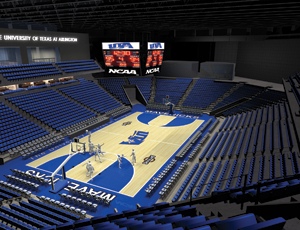The captains of architecture and engineering practices across the New York region were already enduring hard times in the past year, and didn’t need reminders of how bad things were. But in June came news that one of the region’s most ambitious design efforts was retreating.

Forest City Ratner Cos. – developer for the $4.9 billion, 7-million-sq-ft, 17-building Atlantic Yards complex in Brooklyn, that was to be anchored by a transcendent sports arena design – announced it was no longer using “starchitect” Frank Gehry and his firm, Gehry Partners, to design buildings in the project in favor of others who will shepherd more modest plans. The developer blamed the sour economy, strained budgets, and litigation aiming to derail the effort. It all had made Gehry’s grand but costly approach just not right for the times.
Design firms all across the region are tasting hardship in the current slowdown. Even with sectors such as transportation, health care, and higher education still active, nearly every firm in New York, New Jersey, and Connecticut is experiencing fee pressure, intense competition on bids, delays in project timelines, halted jobs, and layoffs.
“I’m not sure that there’s anybody not feeling the pinch at this point,” says Paul Brady, executive director of Connecticut’s American Council of Engineering Companies chapter.
Even specialists in busy sectors are affected, because other firms with thin backlogs are crowding in seeking work, says Burton Roslyn president of the New York State chapter of the American Institute of Architects, and head of Roslyn Consultants, a Westbury, N.Y., architect.
Few industry participants say the worst is over. “We saw some false hopes out there early on,” notes Rick Bell, executive director of the AIA’s New York City chapter.
Some – such as Guy Geier, senior partner at FXFowle Architects – are willing to say next year might bring relief, but it won’t be overnight. “It’s going to be slow,” he says.
For now, the woes are many, says Diane Harp Jones, CEO and executive vice president for the AIA’s Connecticut chapter. Most of the private sector is quiet, and where work exists, developers are seeking cheaper designs or reduced scopes, she says. And some projects have come “to a screeching halt,” she adds. “We had one project where the steel had been ordered and received, but now everything is just on hold.”
And it’s clear the Atlantic Yards case illustrates a larger pullback on scale, design, and timing of major projects, Bell says. “Uncertainty about the future during a recession does not encourage the risk-taking necessary for speculative construction, even at sites well-served by public transportation,” he says.
Bell nevertheless says normal business cycles eventually return, sometimes with better results. “Many stalled projects will be built, though perhaps in a way not envisioned when the first announcements were made or renderings shown,” he adds. “Does anyone remember the initial plans for Battery Park City, a Co-op City on the Hudson? What got built took time, but is better for the wait.”
Stress Points The roughest patches of the market are in the private sector, though the public sector is starting to...



